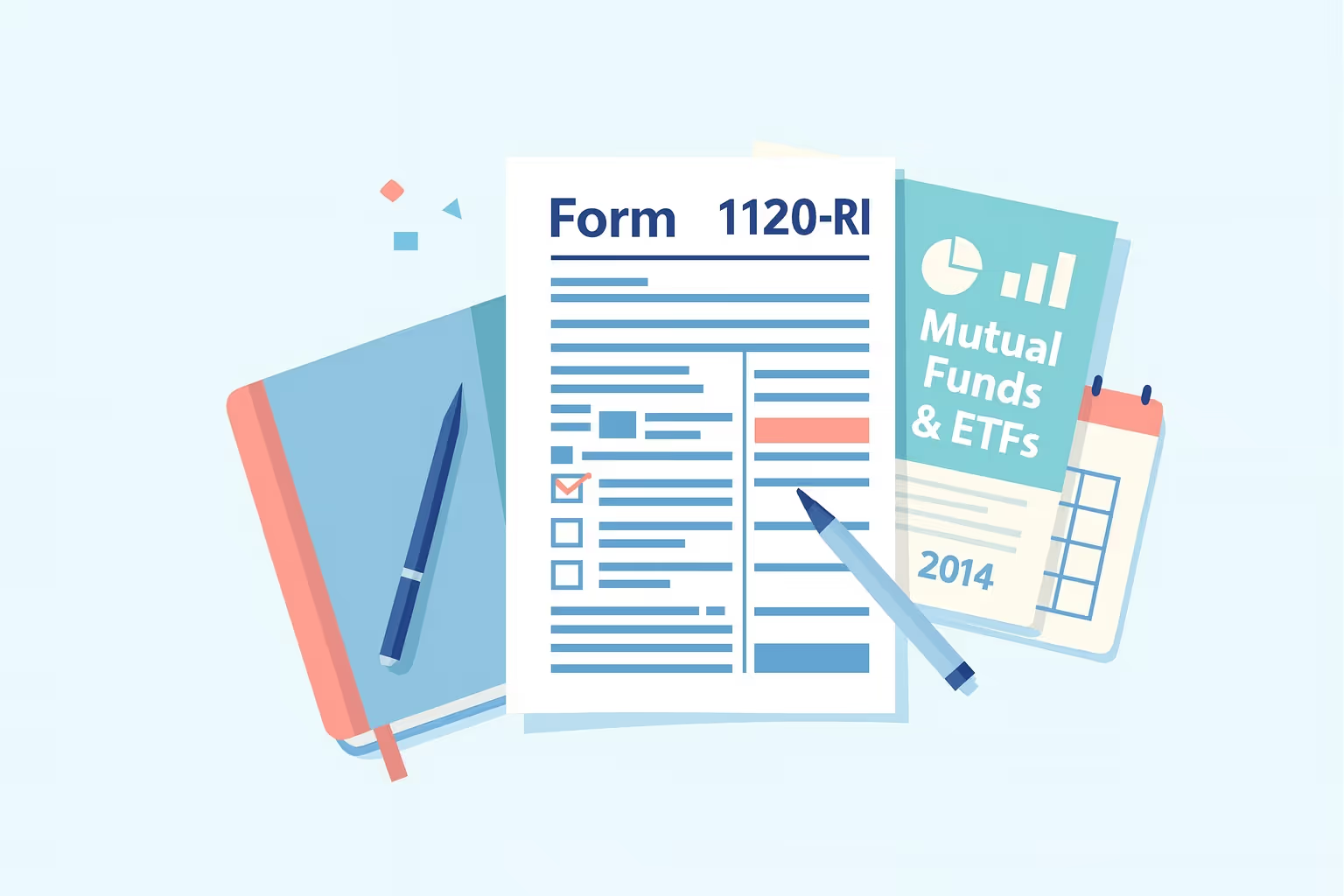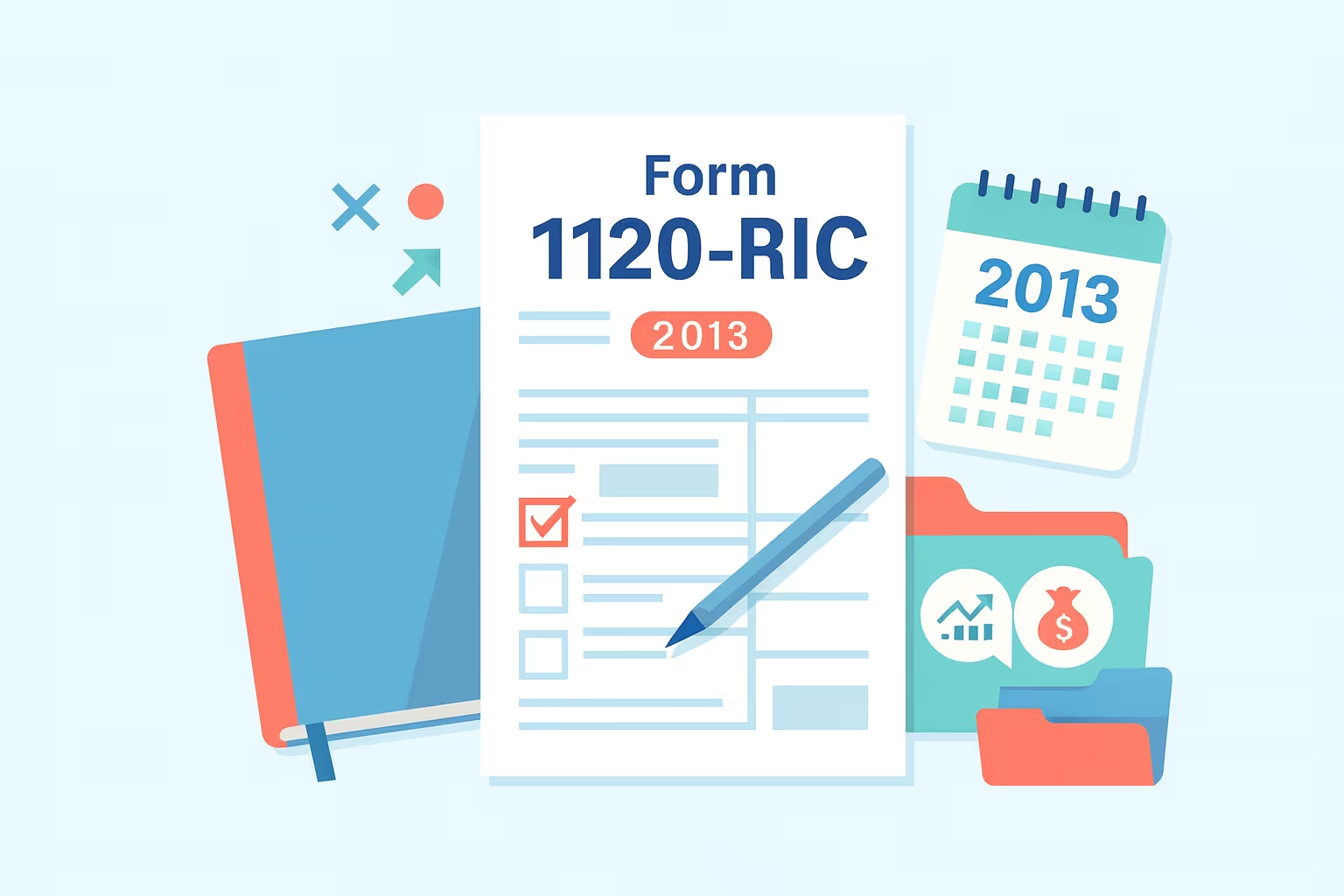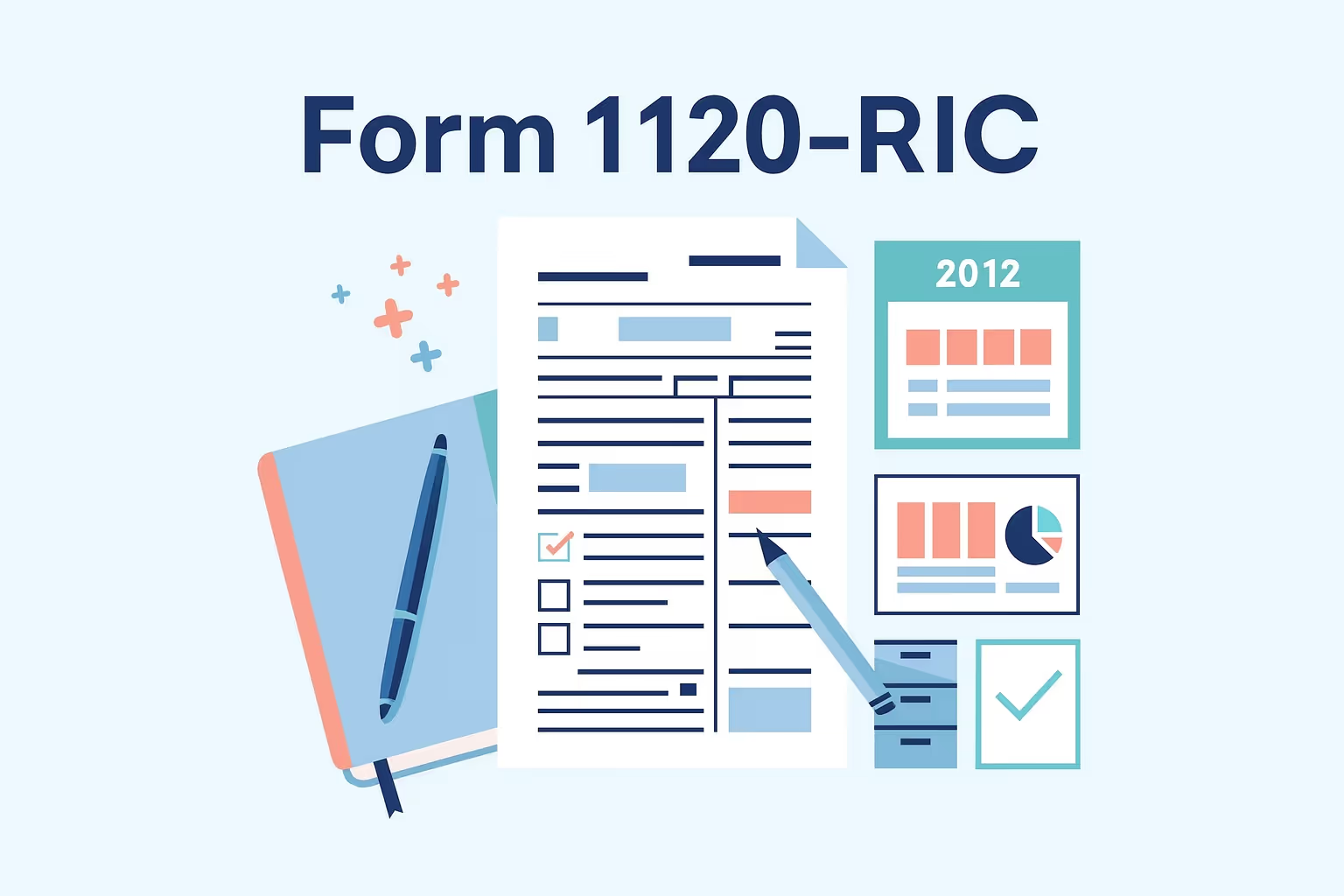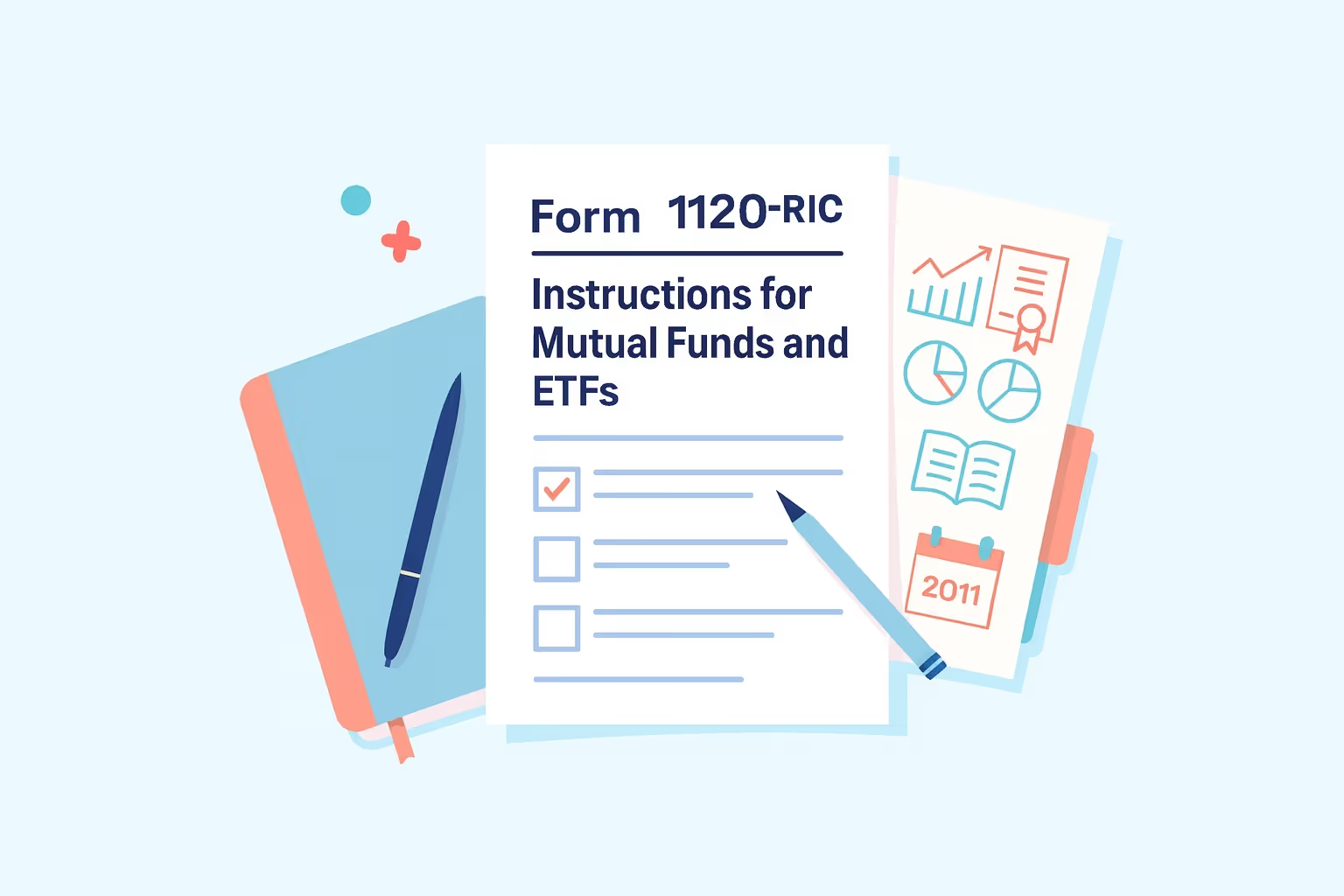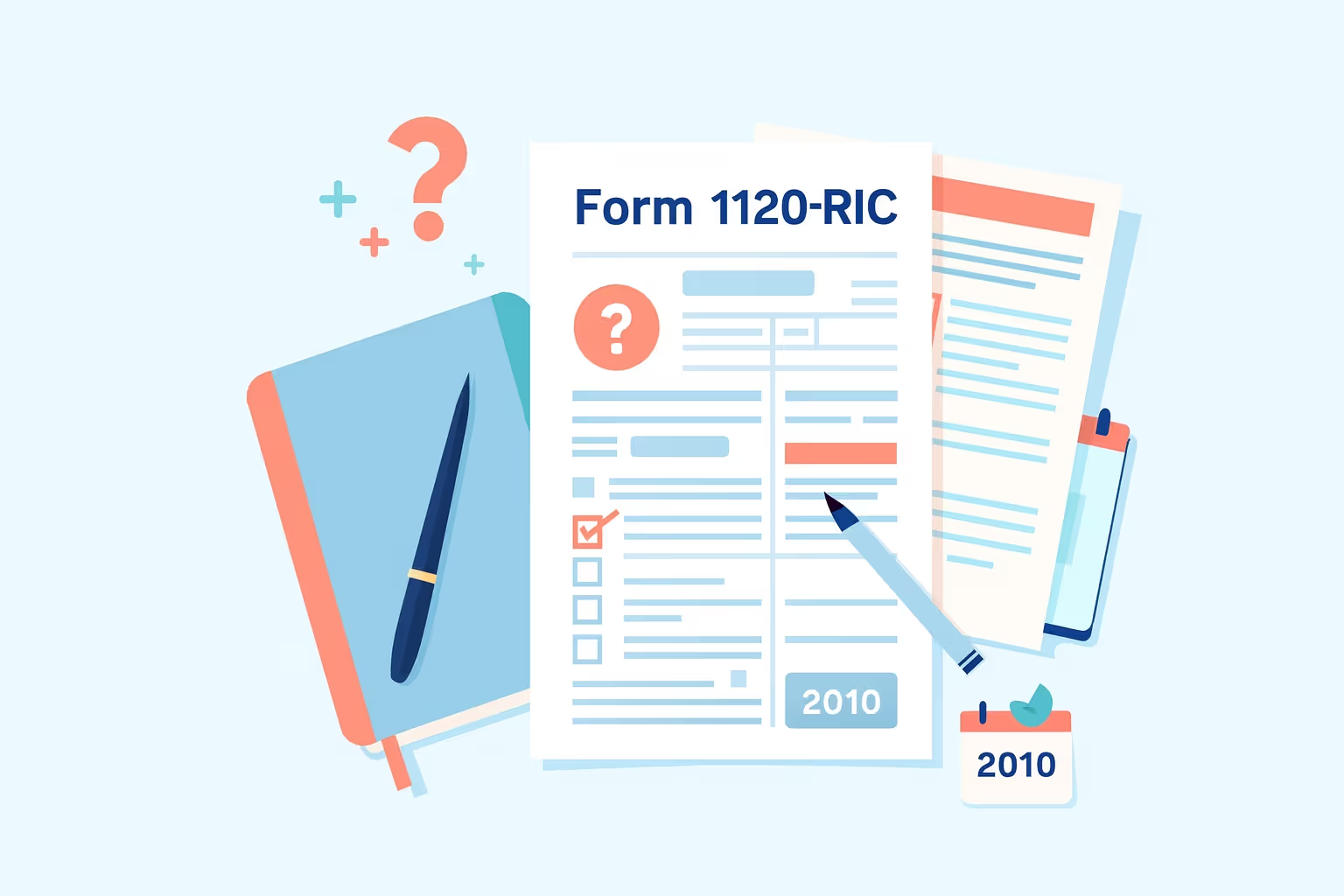IRS Form 1120-RIC (2021): RIC Tax Return

What IRS Form 1120-RIC (2021) Is For
IRS Form 1120-RIC (2021) is the official U.S. income tax return. It applies to corporations that qualify under the Investment Company Act and are regulated by the Securities and Exchange Commission. This includes mutual funds, exchange-traded funds, closed-end investment companies, and unit investment trusts that elect RIC status. Total income tax liability is calculated using gross income, investment company taxable income, net investment income, and capital gains. Filing lets the corporation deduct shareholder dividends, reducing taxable income and avoiding double taxation. It also ensures investment companies file annually based on total earnings and distributions following IRS regulations.
For a detailed breakdown of filing requirements, eligibility rules, and step-by-step instructions, see our guide on How to File Federal Form 1120-RIC for Tax Year 2021
When You’d Use Form 1120-RIC for 2021
A corporation that earned taxable income from its investments as a regulated investment company in 2021 should file Form 1120-RIC. Any RIC that meets IRS income and diversification requirements must file. Correcting income, deductions, or shareholder distributions may require late or amended filings. Companies that manage mutual funds, ETFs, or other corporate income-taxed investments must use this form. Filing maintains RIC status and federal tax compliance by accurately reporting income, dividends, and capital gains.
Key Rules for 2021
- RIC Qualification Standards: At least 90% of a company’s gross income must come from dividends, interest, and securities-related investment activities to satisfy the income test required for RIC status.
- Asset Diversification: At least 50% of the company’s total assets must be held in cash items, government securities, or other qualified investments, with no more than 25% invested in a single issuer.
- Distribution Requirement: Under IRS rules, at least 90% of the investment company’s taxable income must be distributed to shareholders each year to retain RIC classification.
- Deduct Dividends Distributed: Dividends paid to investors may be deducted when calculating taxable income, helping to reduce the company’s overall tax burden and prevent double taxation.
- Capital Gains Reporting: Regulated investment companies must report long-term and net capital gains separately from ordinary income to ensure accurate tax treatment.
- Exempt Interest Dividend: To comply with IRS disclosure requirements, the company must clearly identify exempt interest dividend distributions in shareholder reports.
- Estimated Tax Payments: Regulated investment companies must make estimated tax payments if their expected corporate income taxes for the year exceed $500.
- Filing Deadline: For most filers, the company’s return is due on the 15th day of the fourth month following the end of the calendar year, which is April 15, 2022.
- IRS Forms and Instructions: Companies must use the correct IRS forms and follow the official instructions for the 2021 tax year to ensure accuracy and compliance.
Step-by-Step (High Level)
Step 1: Gather Financial and Accounting Records
Collect accounting documents showing gross income, dividends paid, and investment company taxable income. For complete reporting, include shareholder distribution records, expense statements, and other income from securitization.
Step 2: Verify RIC Status and Eligibility
Ensure the company meets the 90% income test and 50% diversification rule. Review investment activities, securities loans, and total assets to confirm compliance with the Investment Company Act and Securities and Exchange Commission standards.
Step 3: Complete IRS Form 1120-RIC (2021)
Use the correct version of the form for the 2021 tax year. Report net income, taxable income, capital gains, and deductions accurately. Follow the IRS instructions carefully and verify that all dividends, distributions, and compensation are properly listed.
Step 4: Attach Required Schedules and Statements
Attach schedules showing dividends distributed, gains, deductions, and accounting adjustments. Include documentation for payments, expenses, and other financial details that support reported totals.
Step 5: File and Retain Copies
File the tax return for regulated investment companies electronically or by mail. Keep full copies of the form, schedules, and financial records for at least three years to verify compliance during potential audits or amended filings.
Learn more about federal tax filing through our IRS Form Help Center
Common Mistakes and How to Avoid Them
- Failing the Income Test: Not meeting the 90% gross income requirement from qualified investments results in the loss of RIC status and changes how the company is taxed.
- Improper Asset Allocation: Holding more than 25% of total assets in a single issuer violates diversification rules and may disqualify the company from RIC classification.
- Omitting Dividends Paid Deduction: Forgetting to deduct the dividends distributed increases taxable income and raises the company’s total income tax liability.
- Incorrect Capital Gains Reporting: Misstating net or long-term capital gain can trigger IRS adjustments, penalties, and potential income reclassification.
- Late Filing or Payment: Missing filing or payment deadlines results in additional penalties, interest charges, and potential loss of compliance with IRS requirements.
- Incomplete Amended Returns: Failing to include explanations or supporting documents when correcting a prior return causes processing delays and possible rejection by the IRS.
- Ignoring Regulatory Standards: Failure to comply with Securities and Exchange Commission filing requirements for investment companies can lead to compliance issues and additional scrutiny.
What Happens After You File
Form 1120-RIC U.S. income tax returns are reviewed and processed by the IRS. E-filings are faster than mail-in forms. The IRS will provide payment or installment instructions if the income tax liability remains. Documenting income, deductions, and shareholder distributions helps ensure compliance and accurate reporting. Annually reviewing company financial statements to confirm RIC eligibility and avoid penalties for errors or late filings is advised by experts.
FAQs
What penalties apply for the late filing of my IRS Form 1120-RIC (2021) RIC tax return?
Late filing may result in a 5% monthly penalty on unpaid income tax, up to 25%. Late payments add 0.5% monthly interest. Even without full payment, filing promptly helps regulated investment companies minimize penalties and preserve RIC status under IRS rules.
How do regulated investment companies qualify for RIC status?
A company qualifies by earning at least 90% of its gross income from dividends, interest, and securities-related investments and meeting asset diversification standards. To avoid double taxation, it must distribute 90% of its investment company's taxable income to shareholders.
What gross income is included in the income test for regulated investment companies?
The income test covers dividends, interest, capital gains, and income from government securities or direct investments. Nonqualifying income sources don’t count. Meeting the 90% threshold helps regulated investment companies maintain RIC status and favorable tax treatment.
When should an investment company file an amended income tax return for regulated investment companies?
An amended return should be filed when errors occur in income, deductions, or distributions. Companies file an amended Form 1120-RIC to correct capital gains, dividends, or other figures, ensuring accurate taxable income and avoiding penalties.
How do dividends paid affect taxable income for an investment company?
Dividends paid reduce taxable income because they are deductible under IRS rules. This deduction shifts the tax responsibility from the company to shareholders, minimizing entity-level tax and supporting compliance with RIC standards.
Can a return for regulated investment companies include deductions for dividends distributed to shareholders?
Yes. Regulated investment companies can deduct dividends distributed when calculating taxable income. This prevents double taxation and ensures profits are taxed at the shareholder rather than the corporate level.
Where can I find expert insights on completing Form 1120-RIC?
Tax professionals experienced with investment company filings can offer expert insights. Reviewing IRS instructions and consulting advisors ensures that regulated investment companies correctly report deductions, dividends, and capital gains while remaining compliant.
For more resources on filing or understanding prior-year IRS forms, visit IRS Form 1120-RIC: Regulated Investment Company Tax Return Guide.
















